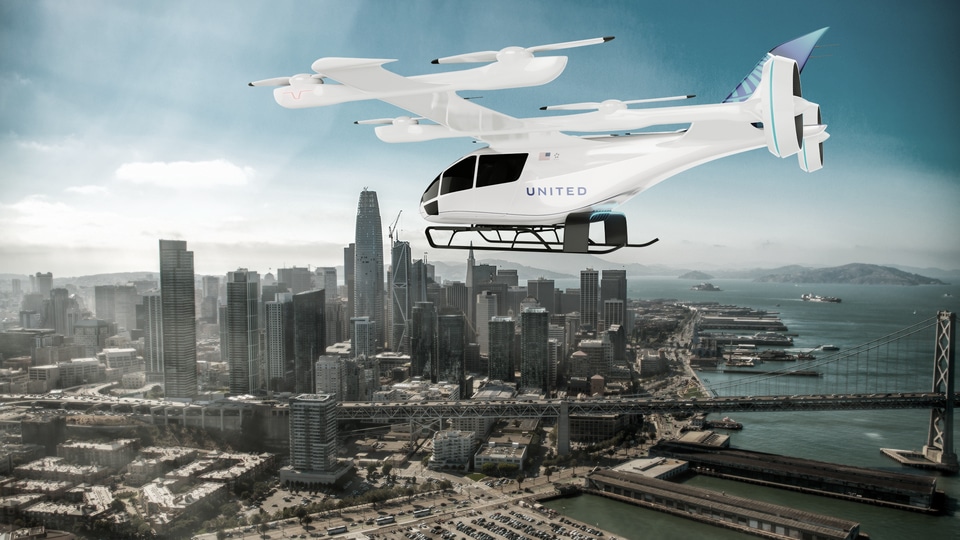Aerospace
FAA Issues Plans for Air Taxis and eVTOLs scaling up US Operations by 2028

The FAA published an implementation plan outlining the actions it and others need to take to securely permit enhanced air mobility operations in the near future. The “Innovate28” plan outlines numerous elements and the order in which they must take place for operations to be at scale at one or more sites by 2028.
Archer’s Midnight eVTOL to Make European Debut at Paris Air Show 2023(Opens in a new browser tab)
The strategy will maximize the utilization of current practices and infrastructure to make entry into service normal and predictable. It describes how the organization and its allies would certify aircraft and pilots, control access to airspace, guarantee pilot training, build infrastructure, uphold security, and include communities.
Today’s broad effort follows the agency releasing its airspace blueprint and proposing a comprehensive rule for training and certifying pilots to fly these aircraft.
Uber reveals its flying taxi prototype for UberAir 2020 I UBER skyport(Opens in a new browser tab)
The plan’s highlights include:
Operations
- Pilots will be able to fly the new advanced mobility aircraft to and from multiple locations at the sites, using predetermined flight schedules with pilots aboard.
- Advanced air mobility aircraft likely will operate up to 4,000 feet altitude in urban and metropolitan areas, using existing or modified low altitude visual flight rules (VFR) routes where possible within controlled Class B and C airspace around major airports.
Infrastructure
- Infrastructure design, development, and implementation will be the responsibility of operators, manufacturers, state and local governments, and other stakeholders.
- Initial operations of advanced air mobility will take place at already-existing heliports, commercial service airports, and general aviation airports. Installation of charge stations, parking spaces, and taxi lanes might require modifications.
Power Grid
- To support sophisticated air mobility operations, the electrical power grid may need to be upgraded.
- The FAA and the National Renewable Energy Laboratory of the Department of Energy have an interagency agreement to study how the electrification of aircraft impacts vertiport, heliport, and airport electrical grids.
Environment
- The FAA will take into account elements like noise, air quality, visual disturbances, and disruption to wildlife when determining the environmental effects of advanced air mobility operations.

Aerospace
When Ratan Tata was denied entry to the airfield at the Aero India show, he waited

During our visit to Aero India 2019, we had the unexpected opportunity to see Ratan Tata at the event, which was a thrilling moment for us. However, there was a surprising hiccup when the security staff didn’t allow him to enter due to a lack of a security pass.
Despite this, he remained calm and patiently waited for about 20 minutes until a member of the Tata team brought him the required pass, after which he calmly proceeded inside. It was a humbling sight, showcasing his composed demeanor even in such situations.
Ratan Tata ji is not only a renowned industrialist but also a trained pilot, holding a pilot’s license. In 2007, he became the first Indian civilian to fly the F-16 Falcon during the Aero India show in Bangalore—a proud moment for the nation.
His passion for aviation extended beyond flying, as he played a key role in shaping India’s aerospace industry. Under his leadership, Tata ventured into manufacturing and maintaining aerospace components while upholding its legacy of quality. Notably, Tata’s collaboration with Airbus to develop and manufacture the C295 aircraft is a testament to its growing influence in the sector.
-

 Aviation2 months ago
Aviation2 months agoMicrosoft Flight Simulator Raises $3 Million to Bring Back the An-225 Mriya
-

 Airlines2 months ago
Airlines2 months agoQatar Citizens Can Travel to the United States Without a Visa
-

 Aviation2 months ago
Aviation2 months agoQatar Airways bans these new Electronic Devices on plane
-

 Airlines2 months ago
Airlines2 months agoJapan Airlines Rolls Out Free Domestic Flights to International Passengers
-

 Travel2 months ago
Travel2 months agoQatar Airways Launches Four Additional Flights from Amsterdam
-

 Defence2 months ago
Defence2 months agoWhich Country Has the Largest Fleet of Fighter Aircraft?
-

 Airport2 months ago
Airport2 months agoWestern Sydney Airport Welcomes Its First Plane After 6 Years of construction
-

 Airlines4 days ago
Airlines4 days agoDAMAC Air: Dubai’s New Luxury Airline Offers Free Flights for Registration








